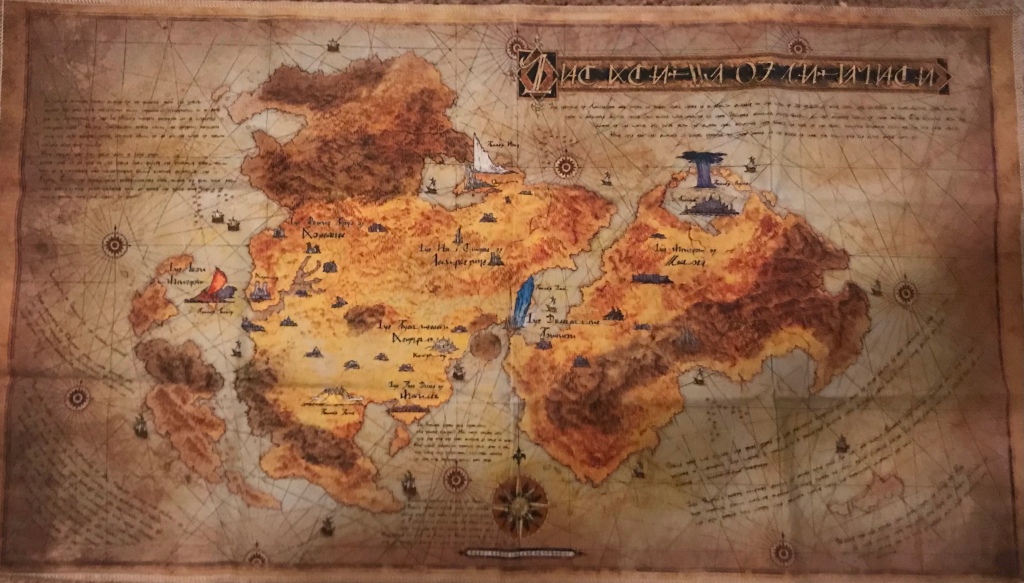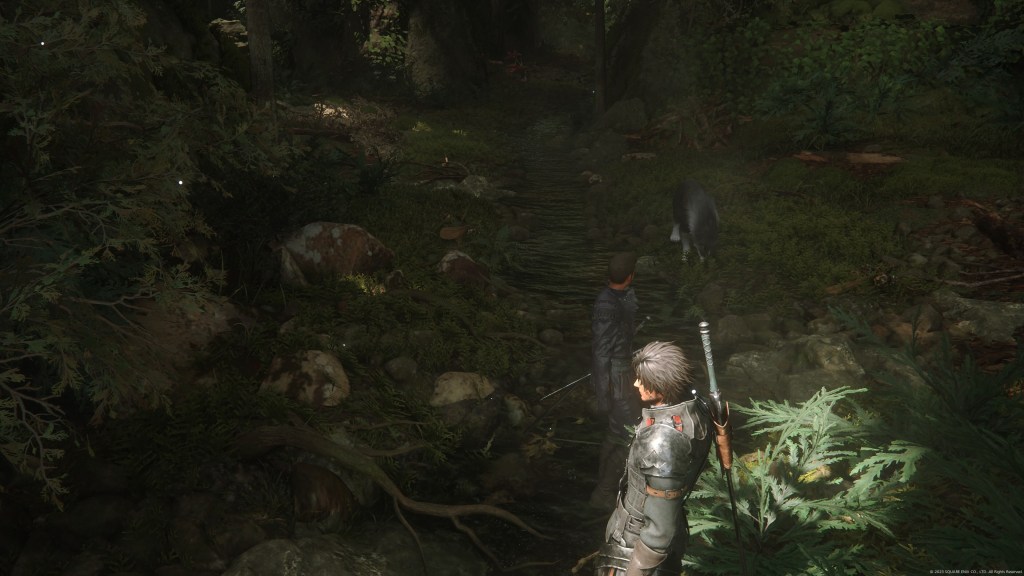
The facial rendering is the best I’ve seen since Vampyr on the PS4. Not even Final Fantasy VII Remake or FFXV matched Vampyr’s facial rendering and body language. Similarly, this game has also got me to do something that no other recent game has- persuade me to go easy on the analogue stick because I felt like it.
I’ve played several games that require different kinds pressure on the analogue stick at different moments. Some of them convince you to do it strategically, usually survival horror (most recent one for me is The Callisto Protocol). But FFXVI was the first game for which it just feels right, sometimes.
A part of it is just how beautiful and lifelike everything is. If you’re in the middle of a crowd or have someone following you, it actually feels more natural and courteous for the same reason it would in real life.

I wouldn’t say FFXV or VIIR failed at that, exactly, but it’s easy to forget sometimes. Which can lead to some interesting situations. Like when I got bored in XV and decide to wander off the beaten path. After I chose a random direction and started wandering, I would notice the body language of the main characters. At a normal clip of with moderate pressure on the analogue stick, Noctis has this self-assured jog. You could imagine him saying something like “Just a little longer, guys!”
While you’re just randomly exploring. In the middle of the woods, at night. I used to giggle at that.

This level of immersion says something about how carefully the graphics are being used. As new as the action RPG format may feel for an old school Final Fantasy lover, Final Fantasy XVI is attempting something very simple and familiar.
The overall premise is not very different from the classic 8-16 bit Final Fantasy games. The main departure is hyper-realistic/cinematic proportions. In particular, the gap between the world-building and the non-diagetic game play has never been so close. Early on, we see magic-wielders use their powers for the kind of mundane, practical uses you would expect in a society with magic. People do things like conjure fireballs to light dark spaces and use conductive crystals to generate water for goblets.
This is emphasized by the early segment when the game places you in the perspective of Joshua, the Dominant of the first fire Eikon.

I’m aware that the developers have stated that you only control one character for most of the game. But the early Joshua segment felt a lot like the beginning of FFIV, in which the party was joined by overpowered class specialists who would usually die quickly or otherwise drop from the foreground. The point of this was to allow a comfortable range of exploration with the different class functions, to learn strategic footing by the time one of the permanent party members reaches the higher levels of specialization.
I’m still early in the game so there’s a lot I don’t know. I’ll probably do another post when I finish. But for now, it looks like the point of the Joshua segment was to give the player a frame of reference when abilities like his become more accessable later.
Then there’s the perspective shifts to Benedikta, acting against the player character Clive. It’s common for Final Fantasy games to confine the scope of the perspective to “party members.” Both VIII and XIII had continuity shifts to other characters who appeared to be outside of the direct plot, only to bring them in at the last minute. VIII did this with Edea and Laguna and XIII did it with Fang, which also illuminated the motivations of Vanille. There’s plenty of game left to prove me wrong on this, but if this were any other Final Fantasy…the presentation of Benedikta would signify that she’s going to be a party member.

Other than world-building and apparent story structure, Final Fantasy XVI has a few themes that are so specific that they’re almost references. When Clive, Torgal and Cid are en route to Lostwing, Clive’s overall motivation is made explicit. Clive witnessed the death of his younger brother, who was a child, while he himself was a teenager. After the murder, Clive was conscripted into an invading army of enslaved Bearers. Years passed which only compounded his grief and trauma with rage.
The unpacking of this loss in the forest surrounding Lostwing felt a lot like the introduction of Cyan in Final Fantasy VI, whose arc begins with a devastating loss and shortly transitions to the Phantom Forest. Granted the resemblance to the scene in XVI is thin, but the rays of light shining through the canopies over the streams felt a lot like the Phantom Forest.
Then there’s the X-factor character: the Dominant of the second fire Eikon. Final Fantasy games often begin with one layer of societal or institutional crisis. The pressure might come from a government, a religion, a corporation or anything else, so long as it’s institutional. The first layer is often subverted by a second crisis. To name a few examples of this, VII has Shinra for the first and Sephiroth for the second, VI has Gestahl and Kefka, X has Yevon and Jecht, XIII has Barthandelus and Orphan, XV has Niflheim and Ardyn, etc.
In XVI, the institution is Waloed combined with the influence of Benedikta. If Benedikta is the source of the first layer of crisis, then the second layer (at this early point in the story) looks like it’s going to come from the Dominant of the second Fire Eikon.
Click the right arrow at the bottom of the post for part 2.